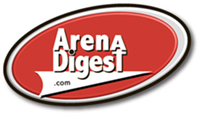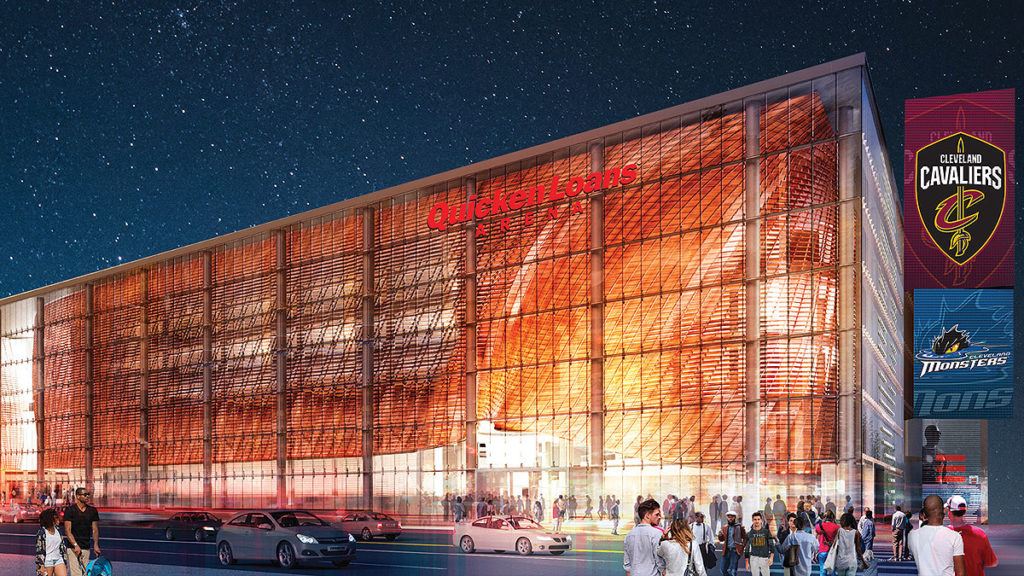A major renovation to Quicken Loans Arena is in full swing, as the venue was closed following the Cleveland Cavaliers’ 2017-18 season to allow for major construction work.
First announced in late 2016, the Quicken Loans Arena renovation is a multi-phase project that will unfold prior to the 2019-20 season. Once complete, the renovations will provide the facility with wider concourses and new gathering spaces, along with a glass front entrance and other features.
Following a Shania Twain concert last month, the Cavs closed Quicken Loans Arena for the summer. While some major construction work began earlier this year, the latest round of construction will mark some of the biggest strides toward completing the project.
The temporary closure of the venue allows for several projects to take place, including the demolition of the north bridge that connects the JACK Casino parking garage to the arena. Quicken Loans Arena will remain closed until the fall, but work will continue during the Cavaliers’ season. Following the 2018-19 NBA campaign, the arena will once again close for the summer months—yielding to a final round of construction on what should be a completed Quicken Loans Arena renovation in September 2019.
When completed, the renovation will result in a few major changes. On the outside of the arena, the most striking change will be an expanded, glass-enclosed north entrance along Huron Road. While providing a stronger visual from the outside, the expanded entrance will also allow for more room inside, creating a 42,530-square foot atrium that expands Quicken Loans Arena’s concourses to facilitate more gathering spaces. A smaller expansion, one that will result in additional 6,350-square feet of space for the main concourse, will be completed on the south side.
More specifics on the Quicken Loans Arena renovation will likely emerge over time, but what the Cavaliers have presented so far resembles similar projects that have taken place around the NBA. Two renovations completed last year—the Utah Jazz’s Vivint Smart Home Arena and the Minnesota Timberwolves’ Target Center—emphasized opening up views to the surrounding area, while allowing for more unique gathering spaces within the facility. Similar projects are taking place to put an emphasis on social areas within NBA arenas, including Philadelphia’s Wells Fargo Center and Atlanta’s Philips Arena.
In the case of the Cavaliers, the team has pitched the renovation in order to continue drawing major non-basketball attractions and marquee sporting events (including the possibility of a future NBA All-Star Game). As part of their commitment to the project, the Cavaliers will extend their lease through 2034, with a pair of five-year options potentially seeing them remain at Quicken Loans Arena through 2044.
The funding model calls for the Cavs’ contribution to come through increased rent payments, with the team slated to pay a total of $92.8 million from 2018-2034. The City of Cleveland will contribute more than $88 million in admissions tax revenue from Quicken Loans Arena from 2024-2034, while more than $44 million is coming from Destination Cleveland, and Cuyahoga County will allocate $16 million from its reserve fund for the convention center and Hilton Cleveland Downtown. Quicken Loans Arena originally opened in 1994.
Renderings courtesy Gensler Sports.
This article originally appeared in the weekly Arena Digest newsletter. Are you a subscriber? Click here to sign up for the free weekly newsletter



